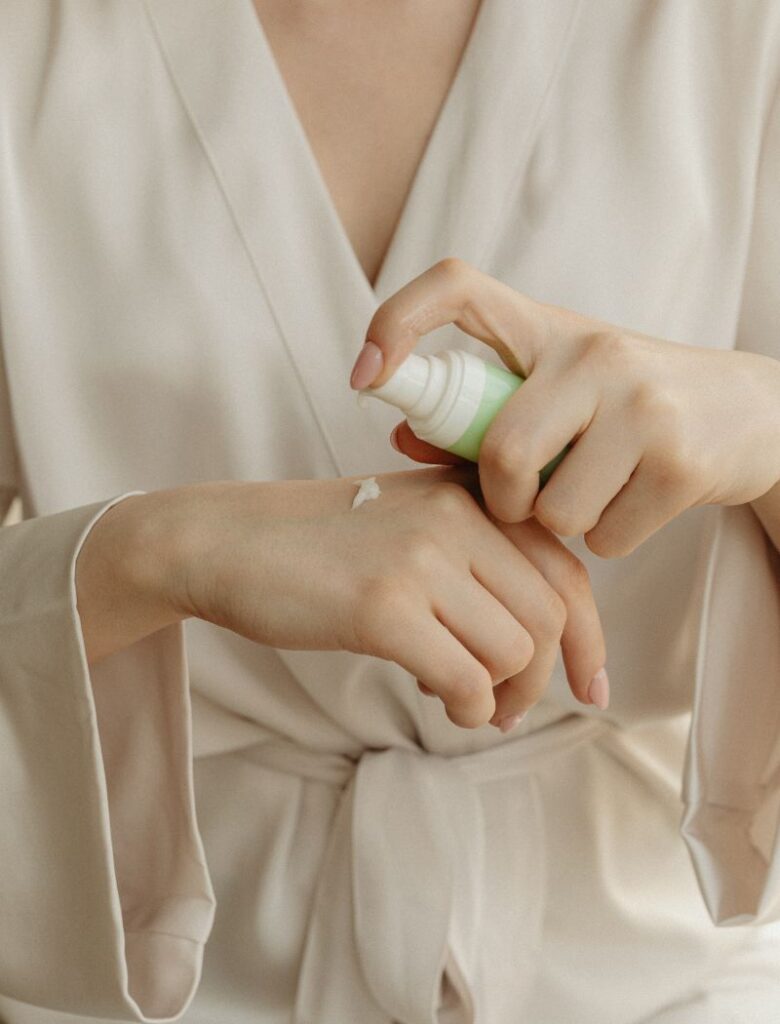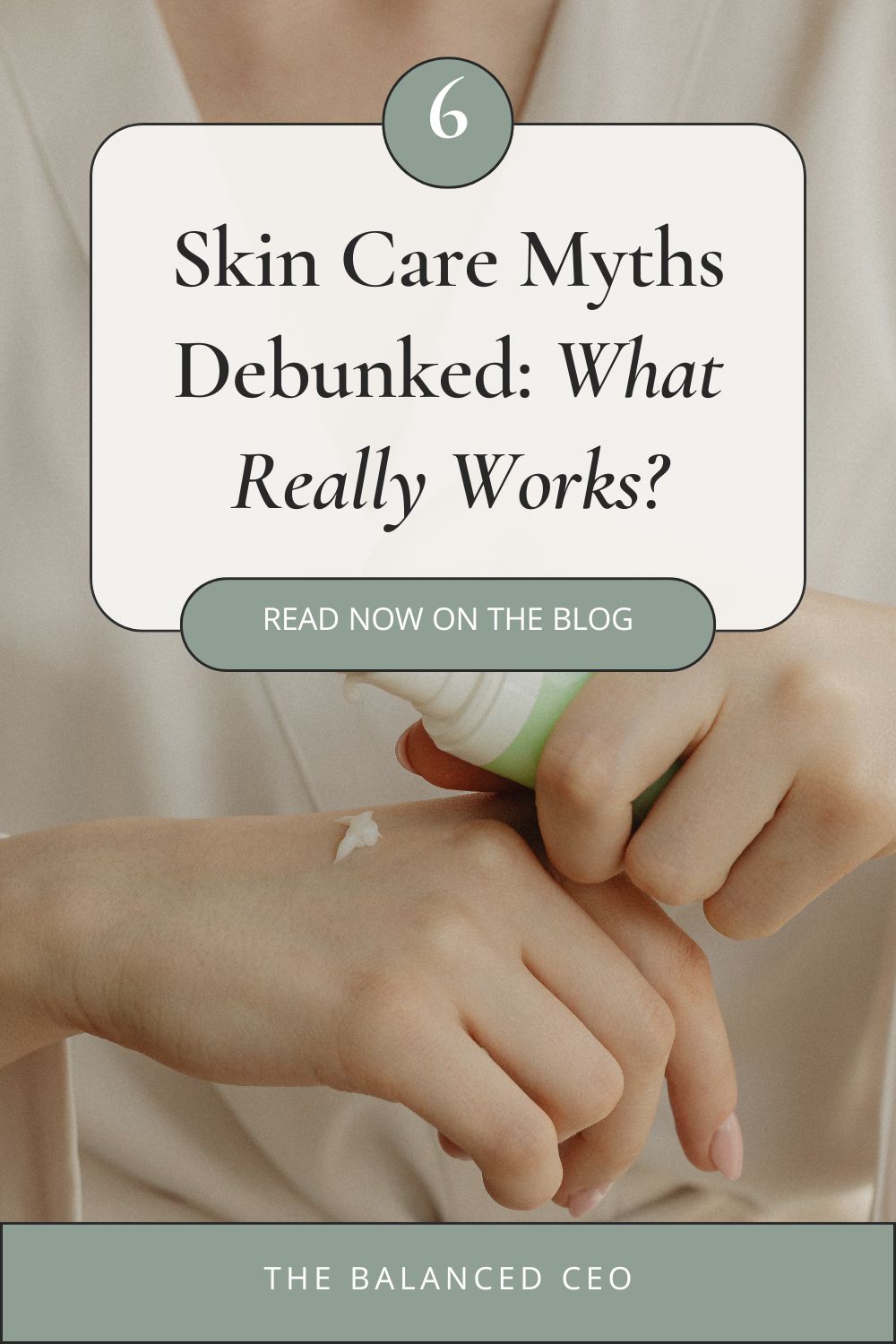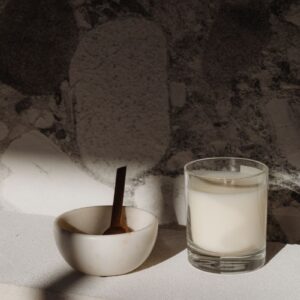This post may contain affiliate links, which means I’ll receive a commission if you purchase through my links, at no extra cost to you. Please read full disclosure for more information.

Have you ever wondered if expensive products are really worth it? Or if natural ingredients are always the safest option? You’re not alone. Many of us fall for common skincare myths, hoping for flawless skin. But believing in these myths can do more harm than good. It’s time to clear up the confusion and get to the facts.
In this article, we’ll debunk some of the biggest skincare myths and share what truly works. So, without any further ado, let’s dive in and learn the way to achieve healthy, glowing skin based on facts, not fiction.
Myth #1: The More Expensive the Product, the Better It Works
We’ve all seen those high-end skincare ads promising miracles in a jar. But does a hefty price tag truly guarantee better results? Not necessarily. While some luxury products contain high-quality ingredients, many budget-friendly options offer similar benefits. It’s important to focus on the ingredients list rather than the brand name or price.
Look for proven ingredients like retinol, hyaluronic acid, vitamin C, and niacinamide, regardless of the price point. Remember, a glowing complexion doesn’t have to break the bank.
Myth #2: Natural Ingredients are Always Safer
“Natural” is often associated with health and safety. But in the skincare world, natural doesn’t always equal better. While some natural ingredients can be beneficial, others can irritate or even trigger allergic reactions. For example, essential oils, though derived from plants, are potent and can cause redness, itching, or breakouts for some people.
Additionally, not all synthetic ingredients are harmful. Many are carefully formulated and tested to ensure safety and effectiveness. In fact, some synthetic ingredients, like retinoids and peptides, are proven to be highly effective in addressing specific skin concerns. So, remember, the key is to focus on what works for your skin, regardless of whether the ingredient is natural or synthetic.
Myth #3: Professional Treatments Are Always Necessary for Flawless Skin
While a good skincare routine at home is essential, professional treatments like chemical peels or microdermabrasion can offer significant benefits that DIY methods can’t match. Professionals have access to stronger concentrations of active ingredients and specialized tools that can more effectively address specific skin concerns.
For example, if you’re struggling with wrinkles, a professional botox treatment could be more effective than over-the-counter wrinkle creams. Botox, a neurotoxin, works by temporarily relaxing the muscles that cause wrinkles, resulting in a smoother appearance.
Professional treatments can also provide personalized advice and guidance on your skincare routine. Estheticians and dermatologists can analyze your skin, recommend suitable products, and tailor treatments to your specific needs. This personalized approach can help you achieve better results than you could on your own.
Myth #4: You Don’t Need Sunscreen on Cloudy Days or Indoors
This misconception could lead to sun damage and premature aging. UV rays, responsible for tanning, sunburn, and skin cancer, can penetrate clouds and even glass windows. Therefore, it’s essential to wear sunscreen daily, regardless of the weather.
To protect your skin, choose a broad-spectrum sunscreen with an SPF of at least 30 and apply it generously to all exposed skin. Reapply every two hours or more frequently if you’re sweating or swimming. Remember, sunscreen is not just for the beach; it’s a year-round essential for healthy skin.
Myth #5: Popping Pimples Will Make Them Go Away Faster
It’s tempting to squeeze or pick at those pesky pimples, but resist the urge! Popping pimples can actually worsen inflammation, spread bacteria, and lead to scarring. When you pop a pimple, you’re essentially rupturing the skin, creating an open wound that’s vulnerable to infection.
Instead of popping, try spot treatments containing benzoyl peroxide or salicylic acid to help dry out the pimple and reduce inflammation. You can also apply a warm compress to help draw out the pus naturally. If your pimple is particularly stubborn or painful, consult with a dermatologist who can safely remove it and minimize the risk of scarring.
Myth #6: Drinking Water Will Hydrate Your Skin
While staying hydrated is essential for overall health, drinking water alone won’t necessarily hydrate your skin. The amount of water you drink primarily affects your internal organs, not the outer layers of your skin. Skin hydration is influenced by various factors, including humidity levels, genetics, and the use of topical moisturizers.
While drinking water is important for your overall well-being, it’s not a magic solution for dry or dehydrated skin. To properly hydrate your skin, focus on using a good moisturizer that contains humectants like hyaluronic acid or glycerin. These ingredients draw moisture from the air and deeper layers of your skin to the surface, keeping it hydrated and plump.
Additionally, using a humidifier, especially during dry winter months, can help add moisture to the air and prevent your skin from drying out. Remember, hydrating your skin requires a multi-faceted approach, and drinking water is just one piece of the puzzle.
Closing Lines
By debunking these common myths, you’re now equipped with the knowledge to make informed decisions for your skin. Remember, healthy skin is a journey, not a destination. Focus on facts, not fads, and embrace a consistent routine with ingredients that genuinely nourish your unique skin.
Sophie Harrington
Guest Blogger





Leave a Reply